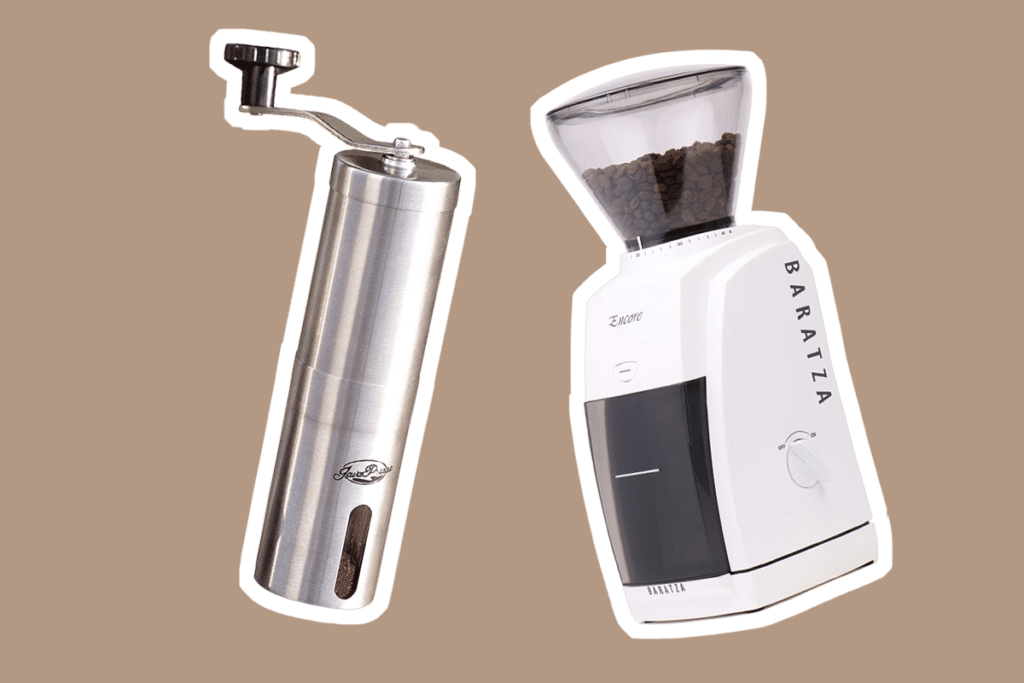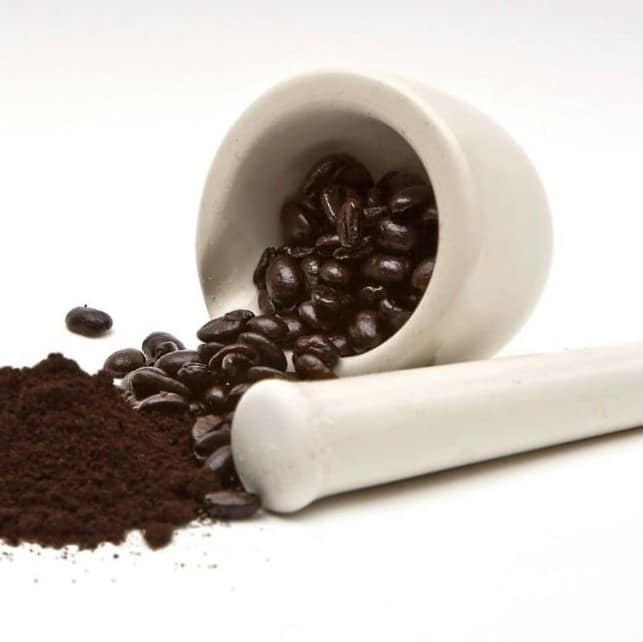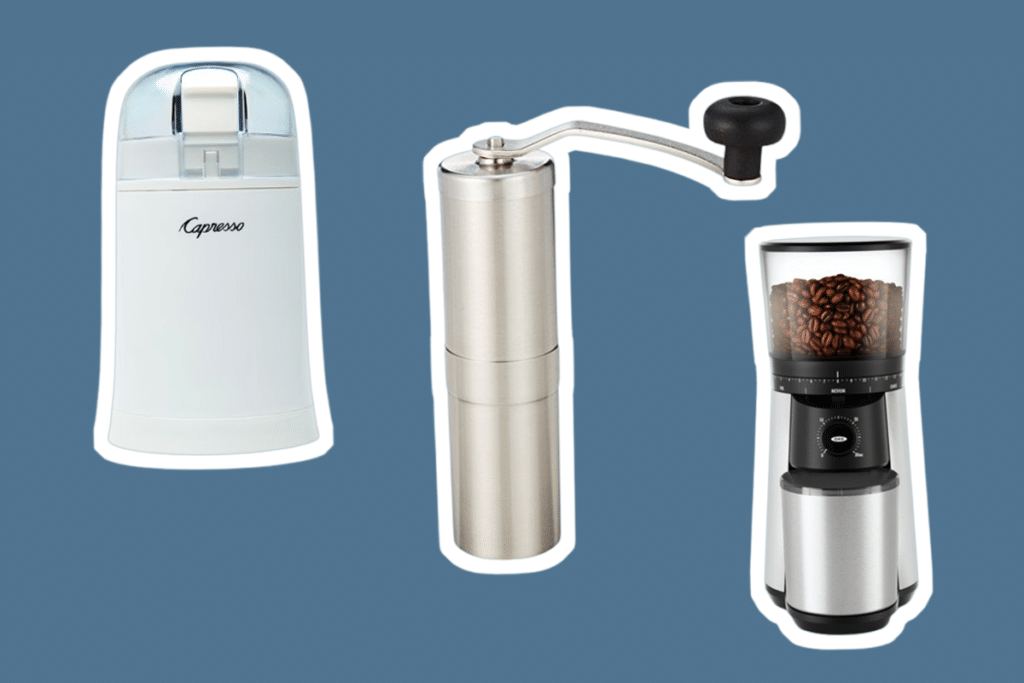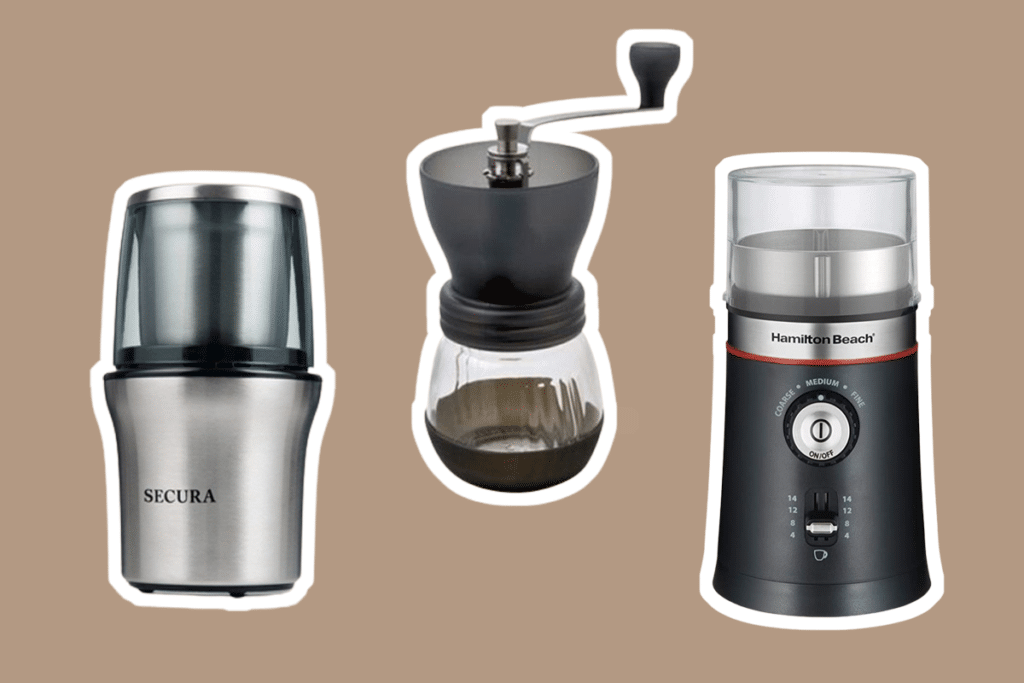

You may have heard this a thousand times but ensuring that your cup of coffee is of the right quality is a process that begins straight from the grinding, or in the case of some people, the purchasing of coffee beans. Despite this, though, a lot of people simply assume that brewing at home improves the quality of their coffee, and while it may be so most times, paying attention to your grind sizes can make your beverage even so much better.
This is where the coffee grind size chart comes into play. Rather than simply following the best brewing processes alone, this sort of chart would help you determine the grind size that is most suitable for your brewing method or for the specialty coffee you’d like to make. And since there is no quality grind without a quality grinder, we throw in some tips there as well.
The quality of the coffee grinds is one of the most important factors that go into determining the quality of the final cup. As such, purchasing pre-ground coffee or using days-old coffee grounds might not cut it for many people.
Grinding your coffee beans fresh right before you need it is the best route to take. For starters, it helps to preserve the aroma and flavor of the beans right until you’re ready to brew, meaning that you get the highest quality possible from a batch of coffee beans. The extraction process is also affected by the grind size Trusted Source Coffee Extraction & How It Helps Create The Perfect Cup - Perfect Daily Grind Coffee extraction can determine the tastiness of the next cup you brew. Here’s how to master it, manage its variables, and improve it. perfectdailygrind.com and quality.
You see, to attain the specific type of coffee you want to make, you would have to brew at a certain temperature or within a certain temperature range, brew for an exact amount of time, and ensure that the coffee-to-water ratio is just right. However, if the above factors are combined with the wrong grind size, your coffee grinds could be over-extracted or under-extracted.
When the coffee grounds used are too coarse for your purpose, under extraction occurs, but when they are too fine, over-extraction happens. To prevent this, the knowledge of grind sizes and which are best for different brewing processes would come in handy.
Before we get down to the different grind sizes, though, let’s talk about your coffee grinders. If you have a blade grinder and that’s what you use for your coffee, then you haven’t tasted real quality coffee yet. Yes, I know, blade grinders work well for your spices and nuts, but this is the coffee we are talking about, and because the grind size affects the extraction procedure, it serves to reason that inconsistent grind sizes would give inconsistent extraction, flavor, and taste.
Blade grinders would give you exactly that; inconsistency. Other than the inconsistency of the grind, blade grinders also generate a significant amount of heat which also interacts with the coffee, heating them and reducing their quality. The inconsistency in grind size and heat generation is because blade grinders work at high speed and use their blades to cut up the coffee beans.
In contrast, burr grinders crush the coffee beans rather than cut them, and as such, they are more consistent without generating the amount of heat that the blade grinders do. However, even burr grinders differ in quality, and the best around for home use are the conical burr grinders. This is because they are much quieter than the alternative automatic flat burr grinders and are more convenient to use than manual burr grinders.
Though their quality may differ from manufacturer to manufacturer, you can never go wrong with this Conical Burr Grinder Form OXO that uses premium stainless steel burrs to attain its uniform grounds while staying durable as well.
We have established that burr grinders are better than their blade alternatives and that the conical burr grinders are most appropriate, but these grinders, especially the automatic ones, come with a lot of grind settings. While these grind settings are not programmed to confuse, they may end up doing so if you don’t know what you’re looking for
Even if you do know your way around an automatic coffee grinder, you might need to tweak the settings one or two times to get the grind size you want. This is because the grinders may contain multiple grind settings that are all appropriate for your brewing method.
Having established that a burr grinder could possess many settings even for the same brewing method, there are popular grind sizes that are generally used to refer to the category of coffee grounds that a person wants.
These popular grind sizes, as expected, are also associated with the brewing method that you could be employed to allow for easy understanding. The following are the popularly expressed grind sizes and the brewing methods, and they are intended for:
Below are the general grind size classifications.
This implies that your coffee grounds are as coarse as they can get without being whole. The very nature of the grind would mean that you’d struggle to extract much in the way of flavor. This makes it suitable for making a cold brew or variations of the cold brew that could easily serve as a recreational drink with a caffeine kick.
A French press doesn’t require a grind size as coarse as the one we just described above, but the coffee grounds mustn’t be too fine as well. If they are found to be too fine, you will end up extracting too much flavor, which for this brewing method could mean a bitter cup. However, you might struggle to get the grind size right for your taste buds the first few times, whether you’re using a manual grinder or an automatic one but worry not. Adjustments after every trial would see you through to the perfect cup in no time.
This coffee grind size is not quite rough enough to be called coarse, but it is not of medium texture as well. The size would prevent over-extraction of the coffee beans, and this is one of the reasons why it is preferred with a Chemex, whose filter helps to prevent the coffee from draining too fast. The Chemex, and its manual Pour-over style, would, however, require you to have a separate coffee grinder capable of churning out this medium-coarse grind with consistency, and you’d do well to pick out a coffee grinder ideal for use with a Chemex if that’s the coffee maker you possess.
This should be the midpoint when it comes to coffee ground sizes, and it is usually recommended by experts that beginners to the full coffee-making process start their journey from this point before making adjustments as they go. The medium grind size would, however, be just perfect for siphon brewers and flat-bottomed drip coffee makers. You might also have noticed from the listing of the grind sizes earlier that the medium grind, just like the fine and the medium-fine, can be used to facilitate an AeroPress. That is possible because the brewing process is flexible enough to accommodate all three grind sizes, provided that changes are made to the brew time. Despite this, though, the medium is best for an AeroPress as it serves as a midpoint from which you can experiment as your taste buds demand.
A medium-fine coffee grind size could also work when making pour-over coffee, just like the two grind sizes above, but that doesn’t mean that it should be mistaken for those two. For easy recognition, this particular size is generally described as being finer than sand but not as fine as the coffee grounds needed for Espresso. It would be suitable for an AeroPress at shorter brew times than the medium grinds.
Because an espresso requires strong taste and flavor, it requires a fine grind to go with high brewing temperatures that would be needed. Using a coarser than recommended grind would result in an under an extracted cup of coffee that would spoil what you’re trying to achieve. Fine coffee grounds are generally described as being slightly finer than table salt, and it is what you are likely to get when you buy pre-ground coffee. Other than the Espresso, they can also be used to make an AeroPress as well.
This coffee grind has been described as having the texture of flour, and you probably won’t be attaining this level; of fineness with your regular coffee grinder. To get this grind size with any sort of consistency, you would need to invest in a Turkish coffee grinder capable of what you want. Sure, some coffee grinders would be advertised as being capable of giving this extra fine grind size, but it is far more likely that the size they would produce is more appropriate for Espresso than the Turkish coffee Trusted Source Don't Call It 'Turkish' Coffee, Unless, Of Course, It Is : The Salt : NPR Throughout the region that was once the Ottoman empire, people make coffee pretty much the same way: using coffee beans ground into a fine powder, then boiled in a little brass pot. But ordering “Turkish” coffee today doesn’t go over well in some Balkan or eastern Mediterranean countries that have some lingering anti-Turkish feelings. www.npr.org that the extra fine is suitable for.
The thing about selecting grind sizes for drinks is that you might struggle to recognize them if the intention is to eyeball them. The alternative that is sure to make your life easier is to compare your grind to a printed-out size chart or use the descriptions above and your sense of feel to find your way.
If, however, you don’t want to get your hands dirty, the following table provides you with a list of brew types and the settings that would give you the appropriate grind sizes on some of the best coffee grinders available.
| Brew type | Baratza Encore | Baratza Virtuoso | Capresso Infinity | Cuisinart Supreme Grind | Bodum Bistro | Mr. Coffee burr grinder |
| Turkish coffee | 1 | 1 | Extra fine 1 | – | – | – |
| Espresso | 5 | 5 | 5-7 | 1 | Indicated by an icon | 1 |
| Aeropress | 5 – 20 | 5 – 20 | Fine 1 – medium 4 | 3 – 15 | From Espresso to drip | 1 – 13 |
| Moka pot | 12 | 12 | Fine 2 to medium 1 | 2 – 5 | Espresso icon +1 | 2 – 4 |
| Siphon | 13 | 13 | Fine 3 to medium 1 | 4 – 10 | Drip icon -2 | 5 |
| Woodneck | 14 | 14 | Fine 4 to medium 1 | 4 – 6 | Drip icon +2.5 | 3 |
| Kalita Wave | 14 | 13 | Fine 4 – medium 1 | 4 – 6 | Drip icon – 2.5 | 3 |
| Hario V60 | 14 | 13 | Fine 4 – medium 1 | 4 – 6 | Drip icon – 2.5 | 3 |
| Bee House | 14 | 13 | Fine 4 – medium 1 | 4 – 6 | Drip icon – 2.5 | 3 |
| Clever Dripper | 14 | 14 | Fine 4 – medium 1 | 4 – 6 | Drip icon – 2.5 | 3 |
| Cone filter drip machines | 15 | 15 – 30 | Medium 1 to coarse 1 | 10 – 15 | Chemex icon +1 | 8 – 10 |
| Soft brew | ||||||
| Flat filter drip machines | 20 – 25 | 20 – 25 | Medium 2 | 10 – 13 | Chemex icon -1 | 10 – 12 |
| Walkure | ||||||
| Chemex | 21 | 20 | Medium 2 to coarse 1 | 8 – 10 | Chemex icon +1 | 5 – 10 |
| Cold-brew | 22 – 40 | 22 – 40 | Coarse 1 – 4 | 18 | – | – |
| French press | 30 | 30 | Coarse 1 | 16 | French press icon | 18 |
| Vietnamese Phin | 30 – 40 | 30 – 40 | Coarse 1 – 4 | 17 | Drip icon +2.5 | 12 – 14 |
The grind settings differ from machine to machine, and the same is expected to hold for grinders with less or more grind settings than some of those on this list. Grinders with more settings, such as the Breville BCG820BKSXL Smart Grinder (and its 60 settings), are considered to be more specific in the sizes they offer, and you can tweak the settings listed above for them by beginning at the medium point and experimenting backward or forwards as you need to.
Normally grinders with multiple settings are favored by coffee drinkers looking to experiment with recipes and even come up with new recipes of their own. Particularly, the three brewing methods below may require some experimentation to get right.
As can be deduced from some of the details shared up to this point, the Chemex requires a medium-sized grind to work out well. But the medium might vary from machine to machine and, as such, many experts advise that drinkers looking to make the cup using a less appropriate grinder should start from the midpoint and experiment in the direction they would like to explore.
The AeroPress is even trickier because it has no ideal size that you can point to and call perfect. Rather, to get it right, you’d need to adjust your grinding settings to fit the brew time that you’ve set or vice versa.
The most popular coffee grind sizes that are utilized range from the medium-coarse to fine sizes, with brew times ranging from 3+ minutes to 1 minute, respectively. As with the Chemex, though, the best place to start for beginners (or for people using a new grinder) is from the medium. From here, you can tweak the settings as your taste buds demand.
Camping coffee is quite odd because its naming has to do less with the grind and brew methods and more to do with the fact that it’s coffee brewed while camping. As such, you can use whatever grind size or brewing method is best for the coffee you decide you want. Where it gets difficult is in the preparation. Except, you’re taking a generator along, you’d not have your automatic coffee maker to depend on, and you would need to adopt a more hands-on process.
So, you would be required to at least watch the heat you’d be using to brew, and the time it would take for your brew to be alright. All in all, this would probably require you to be way past the beginner stage in the coffee-making if you are to get it right.
Not necessarily so. Firstly, the strength of your coffee would be based on the quality of your coffee beans as a whole. Secondly, what finer grounds achieve is quicker extraction, which is one of the reasons why the grounds used in Espresso have a significantly short contact time with water compared to the coarser grounds used for a cold brew.
If, however, you leave your fine grind steeped for a longer than recommended time, you should be warned that it would be most likely over-extracted, leaving you with a bitter and sometimes undrinkable cup of coffee. As such, rather than messing with the fineness of your coffee grind or with the brewing type necessary for your coffee drinks, you’d be best served to buy better quality coffee beans instead.
You can grind your coffee with a blender, but the result will be unsatisfactory if you do so. Just like the blade grinders, a blender utilizes rapidly moving metallic blades to cut up whatever you’re looking to blend. While these blades might be appropriate for dealing with spices, nuts, or fruits, they are unsuitable for dealing with coffee beans. Firstly, the fact that they cut up the coffee beans rather than crush them, as do burr grinders, means that the consistency of the grounds obtained is usually poor.
Another issue would be heat generation and friction. The mode of operation of a blender means that it would generate a lot of heat which could mess with the taste of your coffee and maybe even damage it completely. In both instances, the blender is not even comparable to the blade grinders that use a similar mechanism of action, with blenders considered to be worse than blade grinders where coffee is involved.
Not every coffee drinker grinds a new batch of coffee beans every day, but if you want to have the best quality coffee, you’d want to use the freshest grounds available. Having said that, roasted coffee beans keep better than ground coffee and stays fresher for longer, so it would make sense that leaving your coffee beans whole would help to keep them fresher. At the end of the day, though, the choice is yours, but you should know that the longer your ground coffee stays without being used, the less quality you’d get from your coffee.
It might seem odd to consider all of this information and the effect that grind quality could have on a cup of coffee if you’re the sort of person that thinks coffee is just coffee. But if you’ve attempted to make your coffee or have taken coffee from many different sources, you’d agree with us that not all cups are the same.
To help you upgrade your coffee making game and take your skills from where they currently are to where you want them to be, you would need to get used to the coffee grind size chart or at least a variation of it that allows you to understand just how little changes to the fineness or coarseness of your coffee grounds can affect that flavor and taste of the coffee you get from it.
